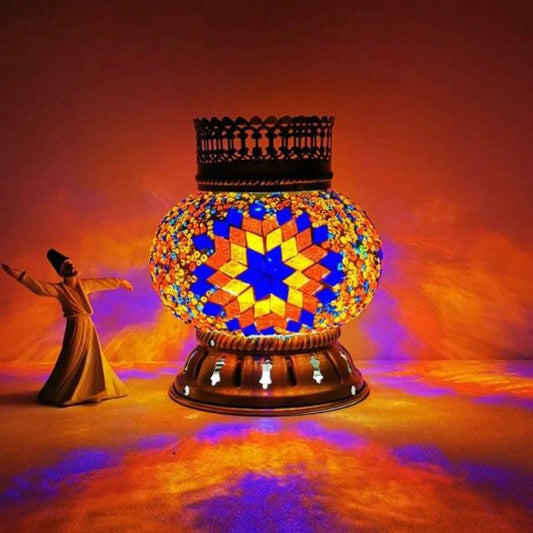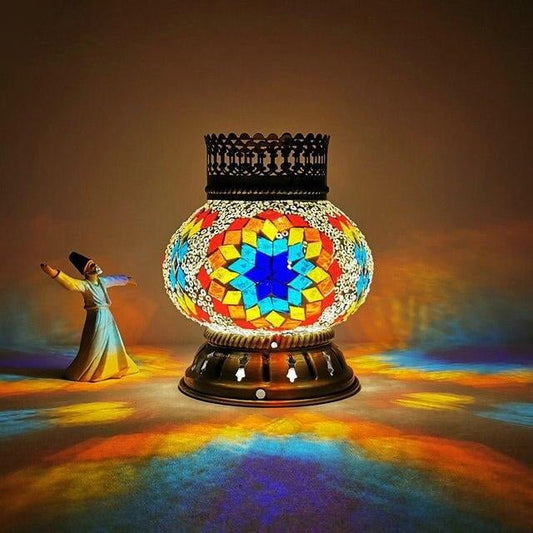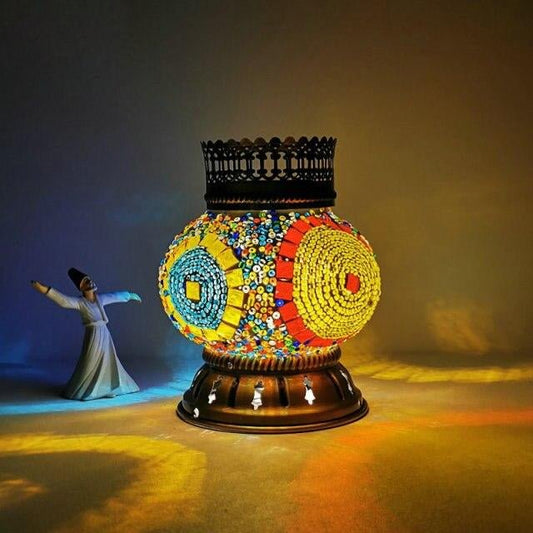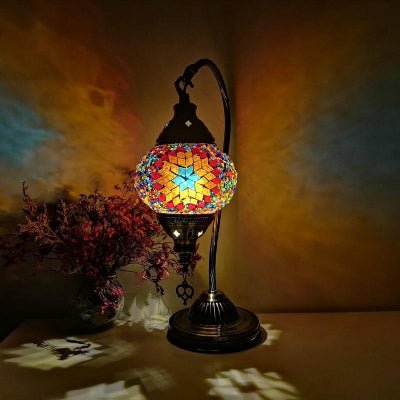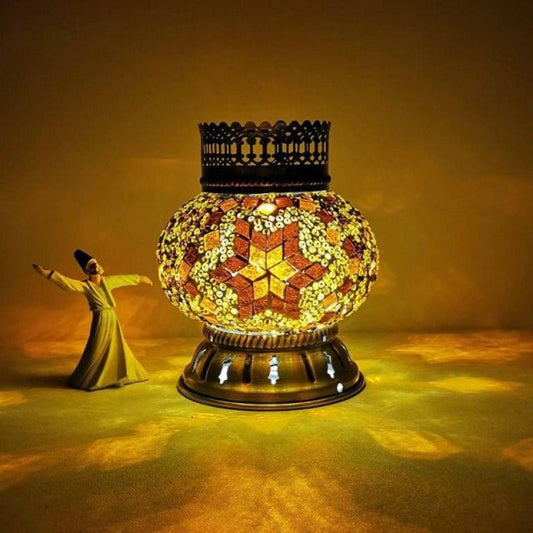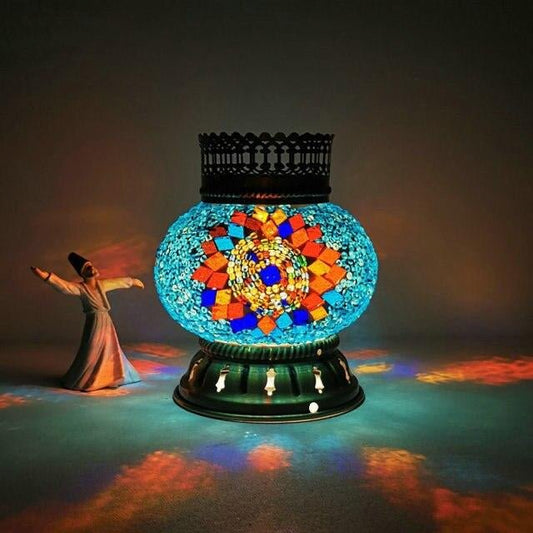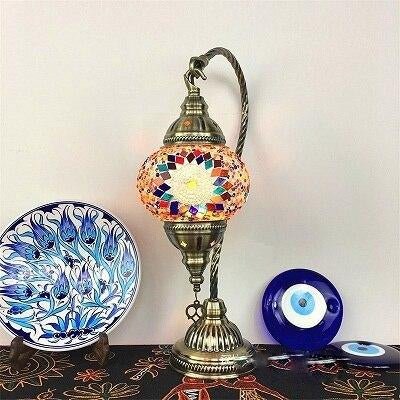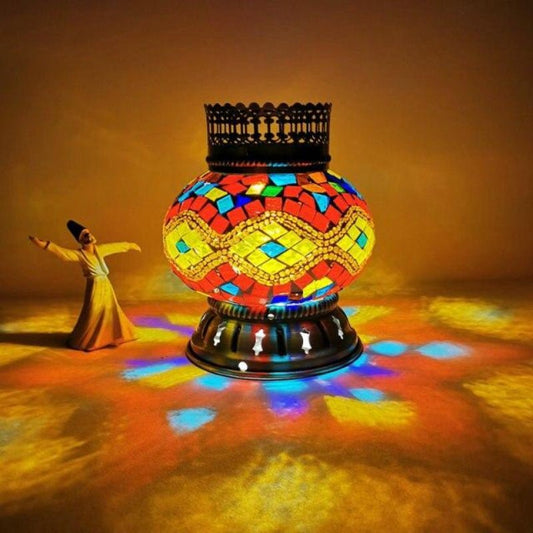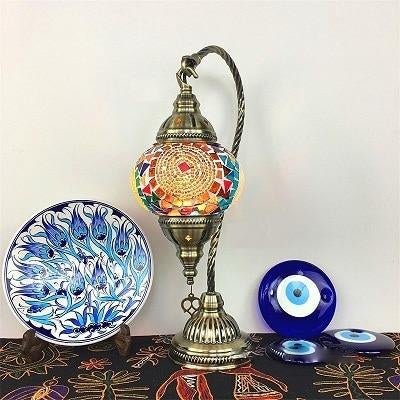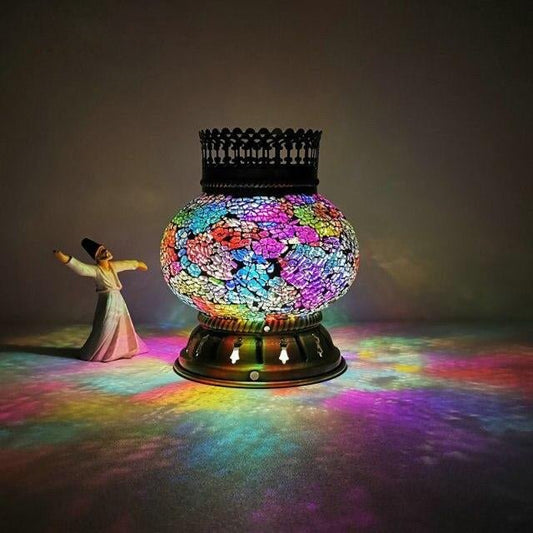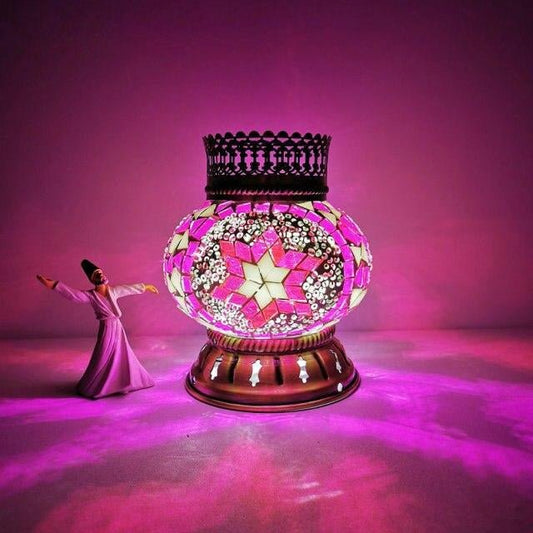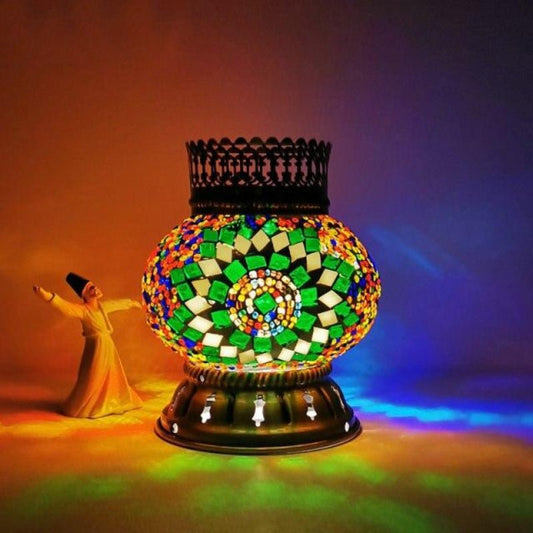In our "Turkish Lamp" category you will find many mosaic lamps with a wrought iron structure, just like our ethnic or Moroccan lamps.
The real difference lies in the patterns as well as the colors of the lighting. The shape is also not exactly the same.
How to illuminate your interior with a Turkish lamp?
A Turkish lamp will bring a colorful and festive or warm light to your interior.
Our suspended floor lamps are smaller and will light up a table more to bring a pleasant atmosphere to a dinner or a tea party. Turkish "classic" lamps are larger and can be placed on a carpet to illuminate a living room or living room.
If you want to see more lamps in this style, check out our mosaic lamps .
Where does the Turkish lamp come from and how is it made?
If you have ever wondered how the beautiful objects that have found their way into your home were born, here is the story of the Turkish mosaic lamp.
Turkish mosaic lamps are a treasure from the Near East that finally found an audience here in the West. The mosaic lamp owes its origin to the tradition of Turkish glassmaking, which dates back a millennium to Asia Minor. Over the centuries, local glassblowers produced a range of objects, including bowls, flasks and decanters, which displayed an unrivaled quality and level of sophistication found virtually nowhere else. in the world. It is likely that today's mosaic lamp owes a direct historical debt to local oil lamps of around 500 years ago. In this post, we'll take a quick look at how these incredible works of art are made in the workshops of Turkey, and then we'll dive into the cultural history.
The making of Turkish mosaic lamps
Mosaic lamps derive their beauty from the quality of the materials used in their construction and from the skill and imagination of the craftsmen who design and manufacture them. Mechanization has almost no place in the production process and therefore each mosaic lamp is an individual work of art. But what is the process of producing such a unique and timeless piece of home decor? Although some aspects of production must remain between the master craftsman and the apprentice, the general process is as follows:
Individual sections are hand cut from large sheets of handcrafted glass in varying colors and thicknesses. The size and shape of each specific piece will later play a vital role in the overall design of the different lamp styles.
A base of transparent hand-blown glass is then prepared to receive the various pieces of cut glass. The basics of the design are traced onto the clear glass using markers to ensure that the final pattern matches the designer's original plan.
A clear, permanent but slow-drying adhesive is applied to a small section of the base, with the design visible through the adhesive to guide the craftsman's hand. Each pattern leaves enough leeway to allow each lamp to acquire its own expressive characteristics.
Section by section, the adhesive is applied and the individual pieces of glass are assembled to form the final mosaic. Once all the pieces are in place, a special paste is used to fill the space between the individual pieces. The finished shade is then given several days to set properly.
After the glue and bonding paste have dried, special cleaning solutions are applied and scrubbed vigorously to remove any excess bonding paste from the surface of the glass segments. This is intensive work that may require several passes.
After the excess paste has been removed, the mosaic lampshade is then smoothed using a metal wheel attached to a mechanical lathe. It is practically the only aspect of production that uses machines.
Once the mosaic lampshade is considered complete, it is attached to brass or bronze components that are crafted and assembled by hand to form a complete pendant lamp, wall sconce or table lamp that will bring beauty and elegance to your home for generations.
While the chemical makeup of adhesive, bonding paste, and cleaning solutions has changed over time, and artisans now use markers when they used to use brush-applied ink, the rest of the process has been essentially the same for centuries. None of the updated aspects of the process in any way alter the beauty and timelessness of the final product.
The role of the mosaic lamp
Today, when you wander among the wealth of Turkish craftsmanship in the Grand Bazaar, the glass mosaic lamps you will see are little different from the mosaic lamps which inspired Louis Comfort Tiffany to adapt the idea to its lighting brand. The warmth and honesty of these decorative lamps is not intended to provide bright light for the completion of detailed work. There are other types of light for this. Rather, their role is to set the mood and create a calm and relaxed atmosphere, whether you place them in the entryway or above the kitchen counter.
Add the charm, elegance and mystery of the Orient to your home
The Turkish mosaic lamps we sell at Decorator Oriental are available in a wide variety of styles and sizes. Each is an individual expression of the glassmaking craft, wired and assembled by hand in workshops that have changed little since the days of the Ottoman Empire and Byzantium. There are no mechanized factories in Turkey where mosaic lamps are assembled by robots for mass consumption. These works of art are reminders of timeless traditions and the value of craftsmanship. While today's most sophisticated smartphones will be obsolete, these mosaic lamps will remain, silent reminders of the eternal and enduring values of Turkish craftsmanship.
TURKISH MOSAIC LAMPS: TIMELESS BEAUTY, UNMATCHED QUALITY
Glassmaking as a valued profession dates back hundreds of years in Turkey and most historians believe it reached its peak in the 16th century. Glass products from this period, including flower vases, decanters, drinking glasses, sugar bowls and flasks, are astonishingly delicate and testify to the highly developed aesthetic sensibility of the craftsmen of the time. It was in fact at this time that historical records first report oil lamps with colored glass shades that would become the precursors of the Turkish lamps we know today.
The cultural confluence
The Turkish glass shade has spent many centuries being refined and reworked, and seeing its aesthetic reach extended and elaborated. By the end of the 19th century, it had reached an extraordinary level of elegance and sophistication. It was at this time that Louis Comfort Tiffany, during one of his many stays in Europe, met them for the first time. He was so impressed by what he discovered in Constantinople (now Istanbul) that he returned to his American workshops and set out to imitate him.
Tiffany made subtle changes to the production process and also changed the look of the glass itself to distinguish it from its Byzantine ancestors, then launched the new product in 1893, which received enthusiastic response from consumers on both sides. of the Atlantic. From that time, the mosaic table lamp, which had been developed and perfected in Asia Minor for hundreds of years, became widely known as the "Tiffany lamp".

